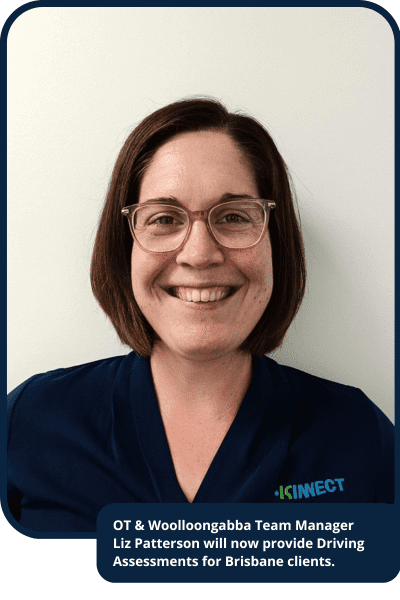OT Liz helps workplace rehabilitation clients get back on the road with driving assessments
A new qualification gained through Flinders University is enabling experienced Occupational Therapist and Woolloongabba Team Manager Liz Patterson to support more people with physical or psychological injuries in returning to driving safely.
For many, driving again is more than a convenience – it’s a milestone of regained autonomy, mobility and participation in community life. In workplace rehabilitation, helping someone back into the driver’s seat can unlock broader opportunities for work, social connection and ongoing treatment.
“Driving assessments are a crucial step in the rehabilitation process. They ensure safety, restore independence, boost confidence and ultimately support people to re-engage in meaningful daily activities,” Liz explains.
For individuals whose injury has caused a permanent or temporary change in their ability to drive, these assessments help determine whether driving is safe and identify any adaptive strategies, training, or vehicle modifications that might be needed.
Following Liz’s attainment of the new qualification, KINNECT can now provides OT driving assessments in Brisbane for workplace rehabilitation clients, referred by their doctor, employer or Workcover Queensland.
KINNECT’s Chief Operating Officer, Amanda Johnston, says: “This new service is a great example of the different types of interventions people may need for a successful recovery that we don’t always think of.
“KINNECT’s workplace rehabilitation consultants strive to ensure that each client has access to everything they need for a smooth and successful workplace rehabilitation journey.
“Our in-house team are experts in workplace rehabilitation, the workers’ compensation scheme and the biopsychosocial factors that influence recovery, which allows them to deliver assessments and recommendations that are practical, meaningful and tailored — and that’s why the outcomes are so much better.”
The two-part assessment process
The first step is an in-clinic evaluation, where Liz will discuss the client’s medical history, medications, the details of the injury, the client’s compensation claim, and the client’s driving history. The client will then undertake physical, cognitive and vision function screens.
The second step (often conducted on a different day) is a practical driving assessment with a specialist driving instructor in a dual-control car, where Liz observes the client’s abilities across several areas. With feedback from the driving instructor, a report is prepared for the referring doctor or insurer, which can be used to satisfy medical certification requirements of Queensland Transport.
Liz can work with the driving instructor, treating specialists, and doctors to develop a return-to-driving plan.
Giving hope after injury
The good news for clients is that a significant injury, even one that has resulted in amputation or paraplegia, need not mean that someone needs to be out of the driving seat for good.
During the 11-week course, Liz experienced driving from the client’s perspective, learning how to use a range of modifications, including head controls, voice activation, sensors, cameras, and hands-only driving controls.
“Very few OTs perform driving assessments or provide recommendations about vehicle modifications, but we see it as another essential step in getting people back to work and life. Even low-cost interventions and driving training to improve confidence can make a big difference.”
“Injuries can chronically restrict people from driving to work and getting ongoing treatment, hindering their progress and motivation to recover. These assessments are a way to help them return to that part of their occupational profile, enabling them to engage in the rest of their rehabilitation,” Liz explained.
Learn more about workplace rehabilitation and our driving assessment service.



